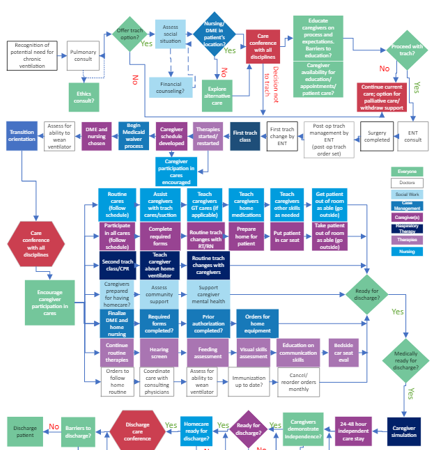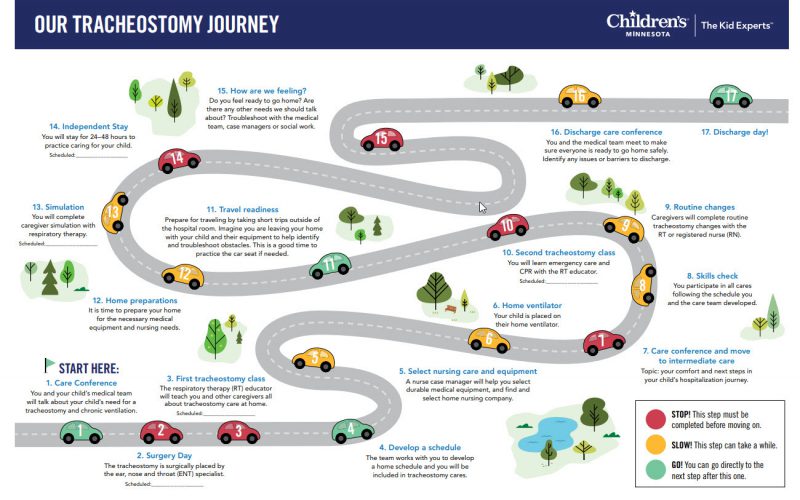Program development
In 2020, a team of clinicians at Children’s Minnesota launched a study to evaluate the feasibility of an early discharge program utilizing nasogastric (NG) tube feedings, home care, and daily virtual care visits with a neonatologist and the care team using an application on a smart device. The study, which ran from November 2020 to July 2021, enrolled 20 infants and was tremendously successful with no serious adverse events. Additionally, full oral feedings were achieved more quickly than inpatient infants.
Based on these encouraging results, Children’s Minnesota moved towards a full implementation of the program across the neonatal division, starting with the St. Paul NICU and Minneapolis Special Care Nursery (SCN) in February 2022 and the Mercy Hospital NICU in May 2022. There are plans to expand the program to the Infant Care Center (ICC) in May 2023.
The core team consisted of neonatologists, a nurse practitioner, a clinical nurse specialist, nursing leadership, home care and the NICU Follow-up Clinic. As the program expanded, additional team members from speech therapy, lactation and special diagnostics were added.
Clinical nurses are key to the program’s success
The Kid Experts™ At Home monitoring program consists of several equally important parts to assure a successful transfer to the home environment: Patient identification, caregiver education, home care nursing, equipment support and technology support. Clinical nurses are crucial in helping identify patients who could be successful in the program because of their consistent presence and interactions with the infant and families.
Once a patient is identified and the family agrees to participate, the clinical nurse will educate the caregivers on using the NG tube, as well as how to administer feedings, record information into the app and perform CPR. Then from the home environment, the caregivers will meet virtually with a neonatologist on a daily basis until the infant reaches full feedings and is discharged from the program.
The program provides expert, specialized care for the most vulnerable patients. It helps more families enjoy special time together in those first few weeks, under their own roof while cutting-edge technology keeps their care team close by.

